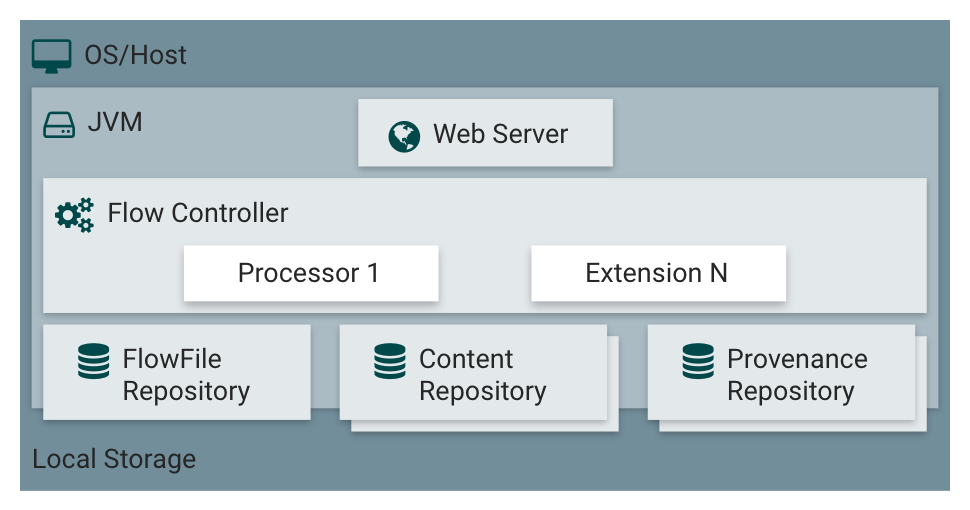NiFi Architecture

NiFi executes within a JVM on a host operating system. The primary components of NiFi on the JVM are as follows:
- Web Server
-
The purpose of the web server is to host NiFi’s HTTP-based command and control API.
- Flow Controller
-
The flow controller is the brains of the operation. It provides threads for extensions to run on, and manages the schedule of when extensions receive resources to execute.
- Extensions
-
There are various types of NiFi extensions which are described in other documents. The key point here is that extensions operate and execute within the JVM.
- FlowFile Repository
-
The FlowFile Repository is where NiFi keeps track of the state of what it knows about a given FlowFile that is presently active in the flow. The implementation of the repository is pluggable. The default approach is a persistent Write-Ahead Log located on a specified disk partition.
- Content Repository
-
The Content Repository is where the actual content bytes of a given FlowFile live. The implementation of the repository is pluggable. The default approach is a fairly simple mechanism, which stores blocks of data in the file system. More than one file system storage location can be specified so as to get different physical partitions engaged to reduce contention on any single volume.
- Provenance Repository
-
The Provenance Repository is where all provenance event data is stored. The repository construct is pluggable with the default implementation being to use one or more physical disk volumes. Within each location event data is indexed and searchable.
NiFi is also able to operate within a cluster.

Starting with the NiFi 1.0 release, a Zero-Leader Clustering paradigm is employed. Each node in a NiFi cluster performs the same tasks on the data, but each operates on a different set of data. Apache ZooKeeper elects a single node as the Cluster Coordinator, and failover is handled automatically by ZooKeeper. All cluster nodes report heartbeat and status information to the Cluster Coordinator. The Cluster Coordinator is responsible for disconnecting and connecting nodes. Additionally, every cluster has one Primary Node, also elected by ZooKeeper. As a DataFlow manager, you can interact with the NiFi cluster through the user interface (UI) of any node. Any change you make is replicated to all nodes in the cluster, allowing for multiple entry points.


